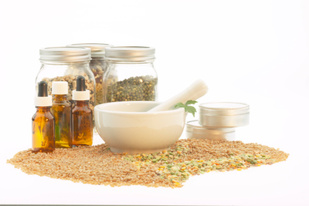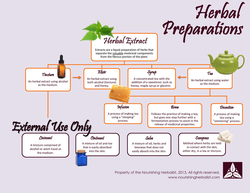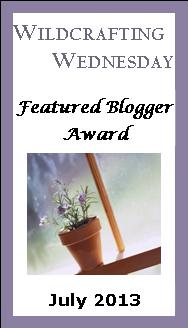
Tinctures, tonics, teas, infusions, decoctions, extracts, brews… WHEW! My head was spinning! Are these terms all referring to the same thing? What is the difference between a tincture and a tonic? Which preparation should I use?
If you're asking the same questions then you've come to the right place. Here you'll find everything you need to come to terms with the terms.
Thankfully, the world of herbalism is much easier to navigate. Perhaps that's why I like it more than politics? And this handy guide is the key to understanding how the various herbal preparations are related.
Herbal Preparations for Internal Use
There are two ways of preparing liquid herbal extracts from a plant.
Tinctures are heavily concentrated extracts made by placing chopped fresh or dried herbs into a jar and covering them with a solvent: alcohol, glycerin or vinegar. The mixture is then sealed and allowed to macerate for several weeks. Most medicinal components of herbs are alcohol soluble, meaning they dissolve completely in alcohol, so this method of preparation is very effective and preferred for best results.
If you'd like to read further about the chemistry behind making herbal tinctures, be sure to read this excellent post by Rosalee de la Foret about the chemical compounds of various herbs and in which medium they are soluble. By the way, don't you just love her name?
Because alcohol is rapidly absorbed into the blood stream, tinctures are the best go-to preparation for acute illnesses.
Elixirs are made by adding just one more ingredient to a finished alcohol tincture: honey (or other sweetener). And lots of it. The typical ratio of tincture to honey is 2:1. Though not included on our graphic, cordials are synonymous with elixirs, but vary in the type of ingredients used in the tincturing process. Today most cordials are marketed by their fruity flavors, but traditionally a cordial offered stimulating and medicinal benefits by employing the use of herbs, namely tonic herbs. (Source)
Teas are an herbal extract made using water as the solvent and are by far the most popular and easy preparation but also the least concentrated. Who doesn't enjoy the comfort afforded by a hot cup of tea when fighting a cold or the flu? The truth is, though, you have to drink a fair amount of tea to receive the same amount of benefit as with a tincture. That doesn't mean tea doesn't have value, though! In fact, ingesting herbal extracts in a tea preparation is ideal in chronic health situations where a long-term, yet mild exposure to an herb is preferable.
Now, in the tea realm there are three different ways of preparation: infusions, decoctions, and brews.
Infusions are tea preparations from the more delicate plant parts, like the leaves and flowers, and employs a steeping process to extract the beneficial components of the herb. Simply place the plant parts in a jar and cover them with boiling water. Allow the liquid to sit for as long as you'd like. The longer steeping process, the more potent the tea will be.
Decoctions are tea preparations from the more hardy plant parts: roots, bark and seeds. In this method the plant parts are placed in cold water and brought to a boil. Then the liquid is simmered for 20-60 minutes, depending on desired potency.
Brews are perhaps one of the least understood forms of herbal preparation and involve fermenting an infusion or decoction (tea). When thinking in terms of "brewing", replace the image of a frothy glass of homemade beer (which is also chocked full of yeast) with that of a jar of kombucha... and you'll have the right idea.
Before we leave the realm of tea, we venture into yet another sugar-laden herbal preparation similar to elixir...
Syrups are a healthy child's best friend. If elderberries are a staple in your natural medicine cabinet, chances are you're familiar with the purple sticky sweet goodness known as elderberry syrup. Yum! Syrups are made by adding a sweetener like honey, maple syrup or glycerine to your highly concentrated teas in a ratio of 2:1.
By the way, sugar is a preservative, just like salt. Consequently, your grandmother's syrup or elixir recipe from back in the day may suggest a tea/sugar ratio of 1:1 in order to keep the syrup from going bad. With today's option of refrigeration, that ratio is simply not needed. And since sugar lowers vitality, it's best to keep it at a minimum.
Lastly, another definition worth discussing that didn't make it onto the herbal preparation graphic is "tonic". We are big fans of tonic herbs and use them all the time in our cooking, but we often find people confuse the word "tonic" with "tincture". In truth, a "tonic" refers primarily to the feeling an herb promotes in the body, whether the herbal extract be in the form of a tincture, cordial or a tea, etc. Herbal tonics are extracts of tonic herbs used to restore and invigorate the body systems, which in general promote an overall sense of vitality - our favorite thing!
Herbal Preparations for External Use
Ointments are a mixture of water (either plain or in the form of tea) and oil (also either plain or soaked with herbs) in a ratio of 1:4. This combination forms a cream that is easily absorbed into the skin and is very moisturizing. Compare that with...
Salves are healing mixtures used on the skin that are not very absorbent. Think in terms of petroleum jelly. Not that I would ever recommend using that stuff. Ever. Never ever. Salves are a mixture of oil, water and beeswax, which offers an excellent protective quality for the skin.
Compresses - Last but not least are herbal compresses, where herbs are held in direct contact with the skin for healing. The herbs can either be in dried form, or hot or cold extracts in the form of tincture or tea. Although not included in our graphic, similar to a compress is a poultice. Poutices are a bit messy and include the same components of a compress but are further mixed with clay and/or powdered herbs until reaching a paste-like consistency.
In Conclusion...
What is your favorite herbal preparation? Is there a definition discussed here that seems different than the way you've learned it before?

*Feel free to print the herbal preparation graphic and stick it near your herbs as a handy resource guide!*




 RSS Feed
RSS Feed